

Home Preamble Index Areas Hills Lakes Dales Map References Me Drakkar
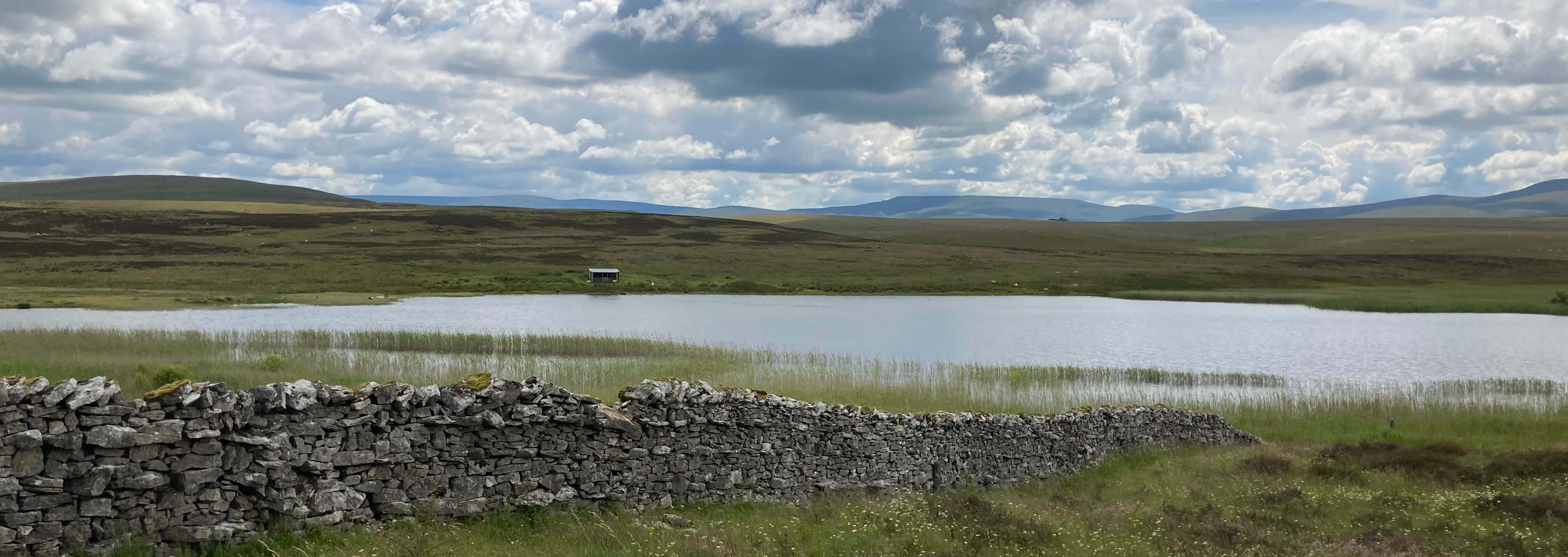
Sunbiggin Tarn
We set off to sample this plant life, heading towards the tarn. Within a few yards, we’d seen a number of orchids (and by the end of the walk we’d seen hundreds). Now, you’d probably appreciate some precision: what species of orchid?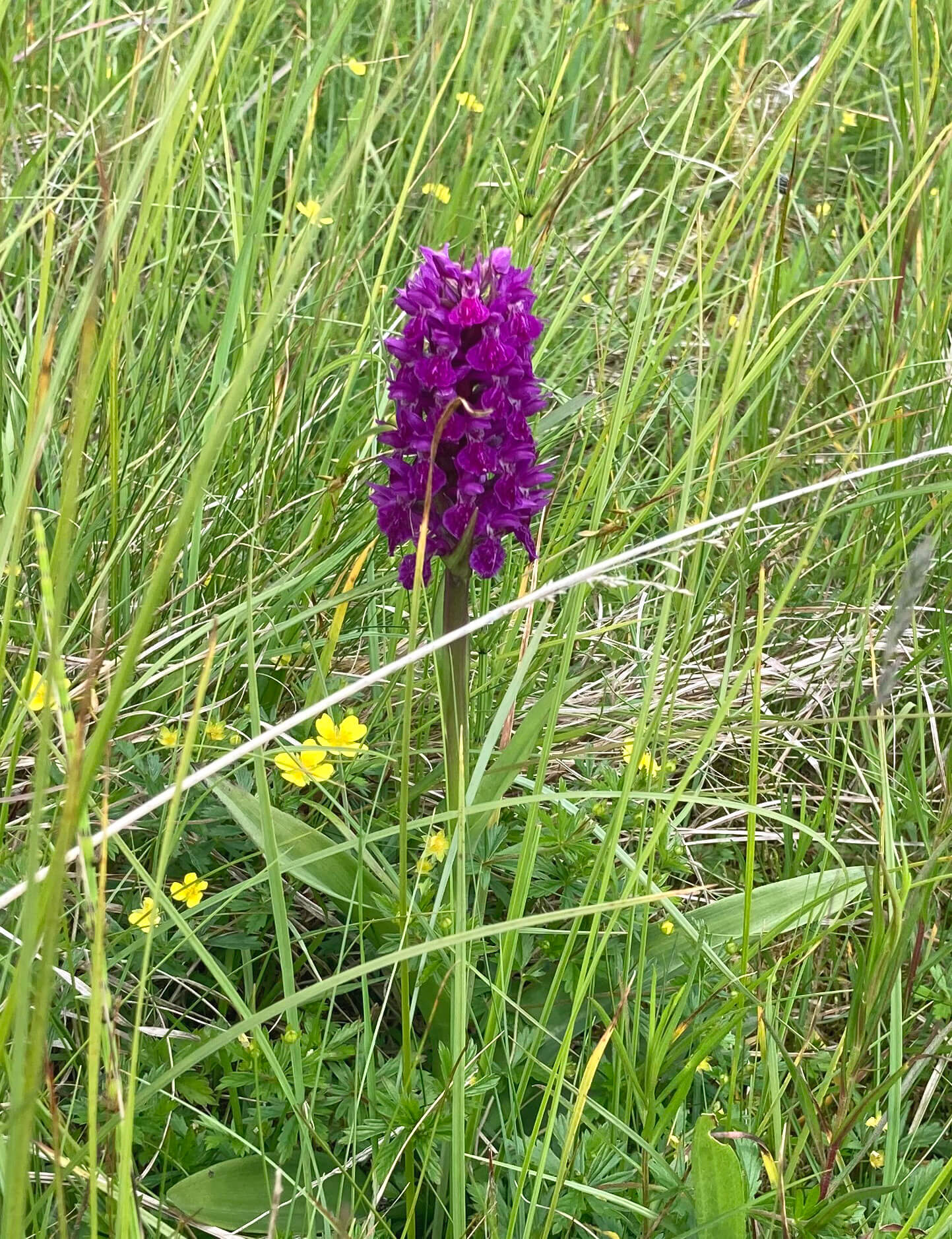
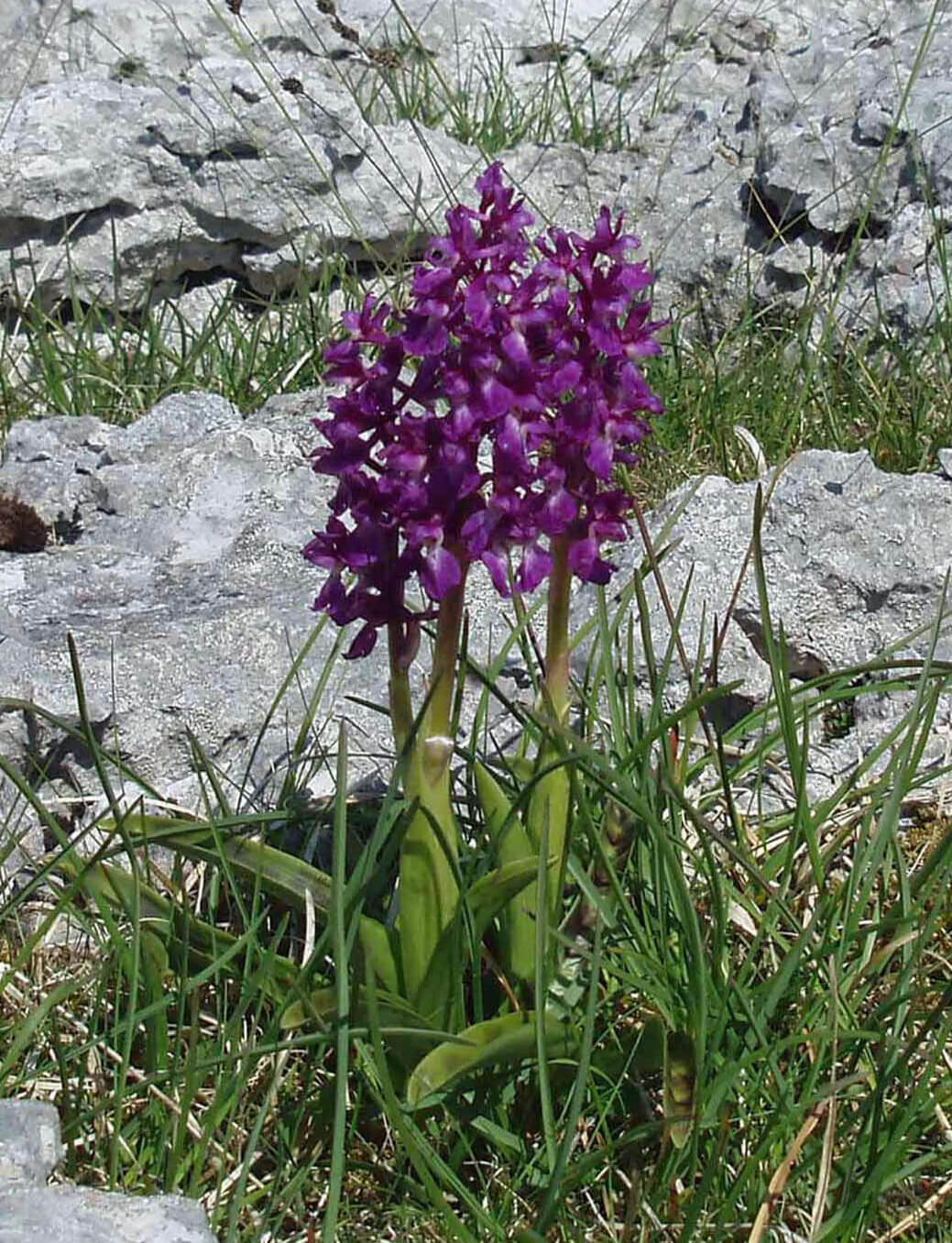
Left: One of the many orchids; Right: The early purple orchid.
When I started trying to write about my wanders in the countryside I soon realised that my background in physics and computing had left me with large gaps in my knowledge of nature, ecology and the environment. Where should I begin, in plugging those gaps? The plant world seemed the best bet. Plants don’t move a lot, they don’t hide away from our sight, and they don’t prefer to slink about at night. On the contrary, they flaunt their floweriness in broad daylight (admittedly for the insects, not us) and they have the courtesy to stand still while we study them. So, when, fifteen years ago, I saw an orchid (in fact, the one shown above right) in the Sunbiggin region I wondered if I could identify which species it was.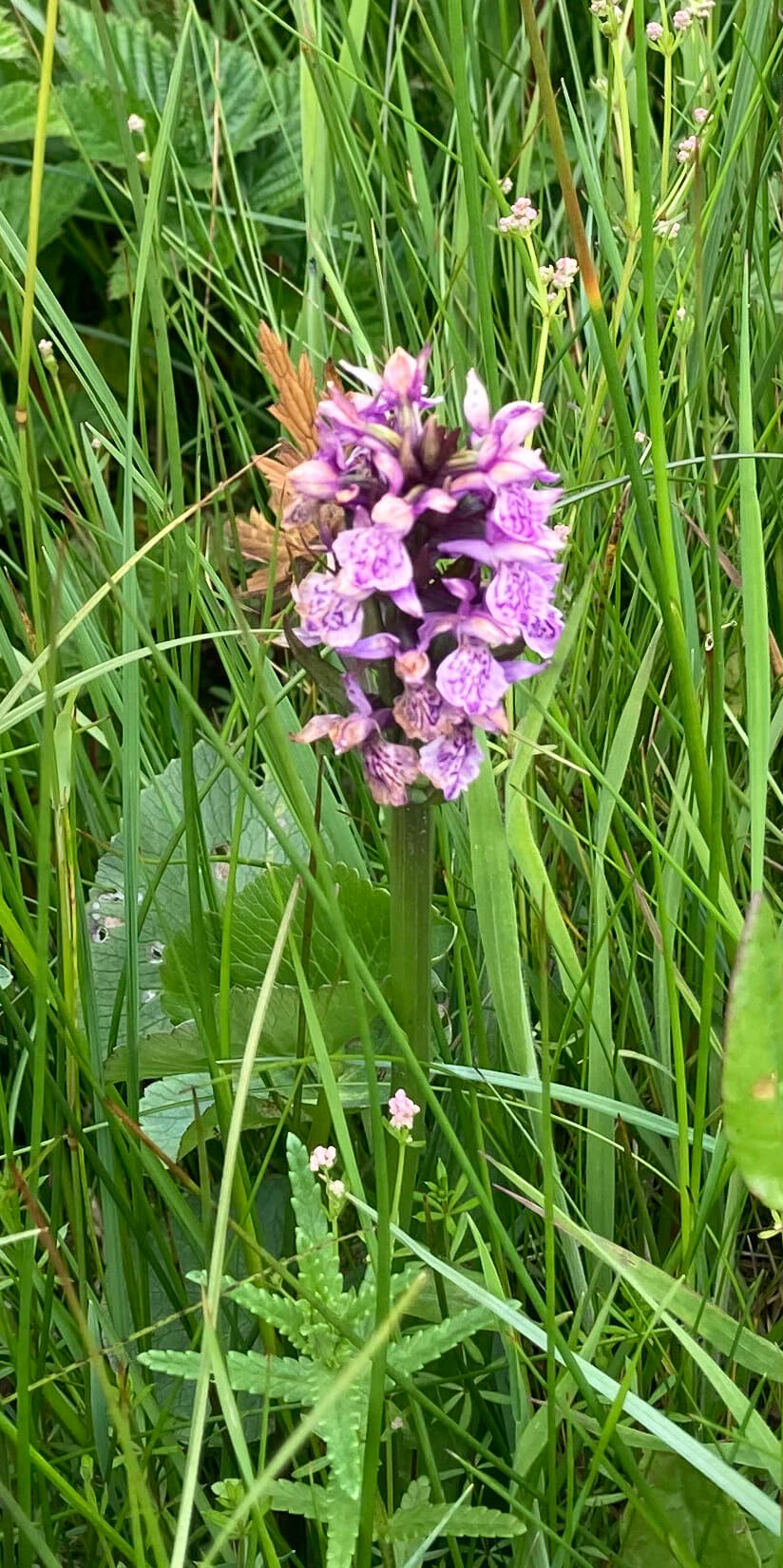
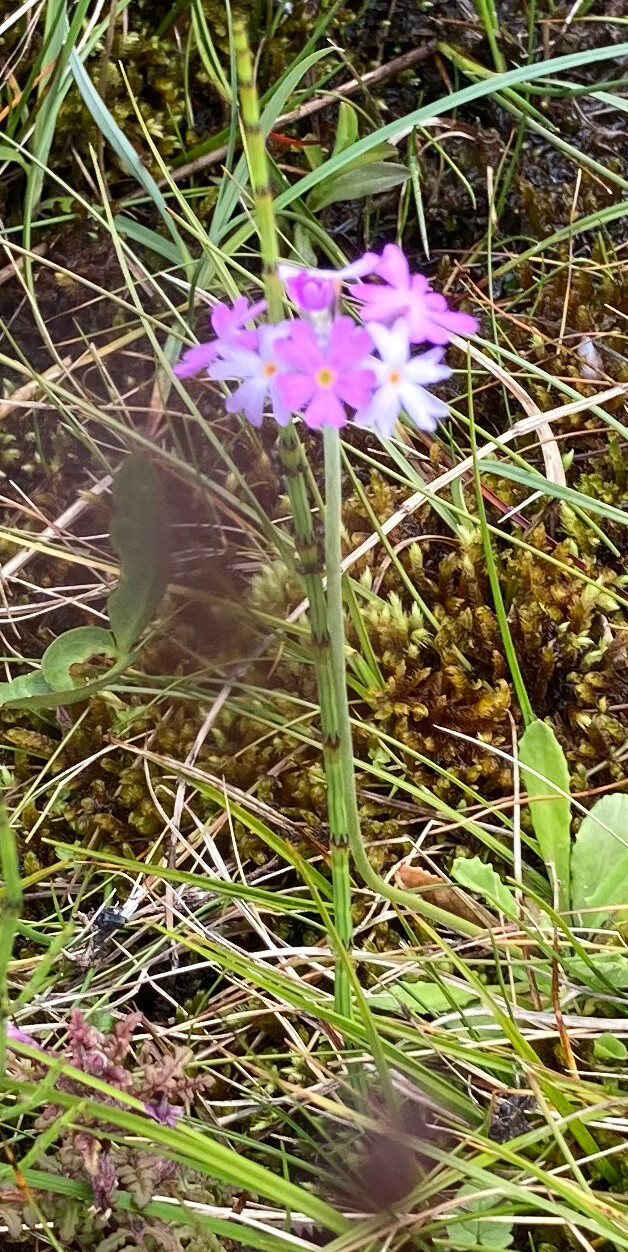
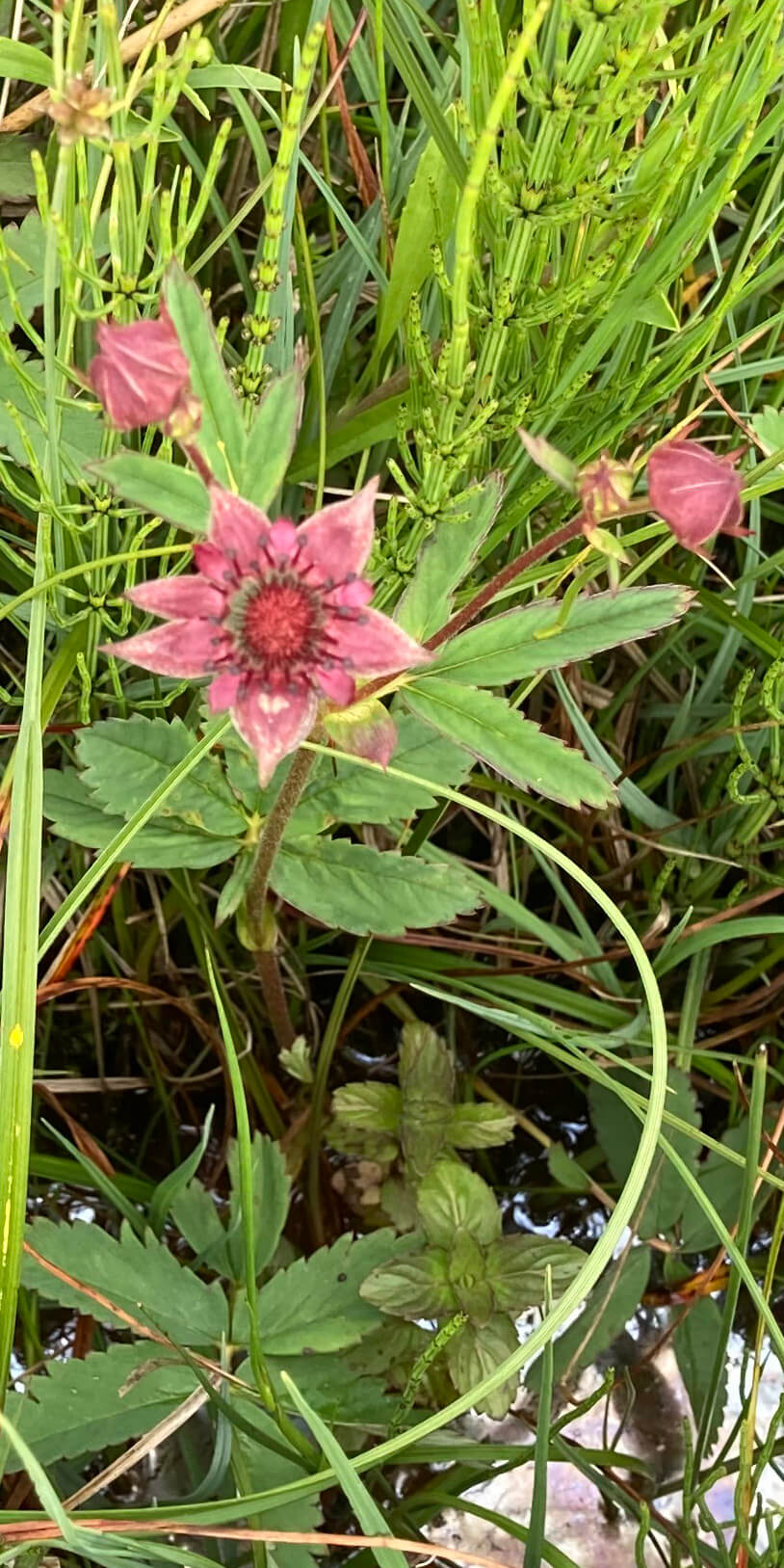
Some Sunbiggin wild flowers for you to have a go at
We wandered on to walk alongside Tarn Sike, which meanders sluggishly across the moor, either into or out of (it was hard to tell) Cow Dub, next to Sunbiggin Tarn. Among the multitude of wildflowers we were looking for a particular species. Years ago while walking here I had photographed a pretty plant (shown below left) with delicate white flowers, with hairy fringes, with pink or purple buds. After hours of study I concluded that this flower was a bogbean, although I was disconcerted by the fact that my flower clearly had six petals when all the pictures I found of bogbean showed five petals. What chance have I got when flowers can disregard what it says in the books? But then I remembered those childhood hunts for four-leaved clovers. Presumably it doesn’t matter much to a plant whether it has five or six petals. About 1 in 1,000 people are born with six fingers - and some consider it an advantage.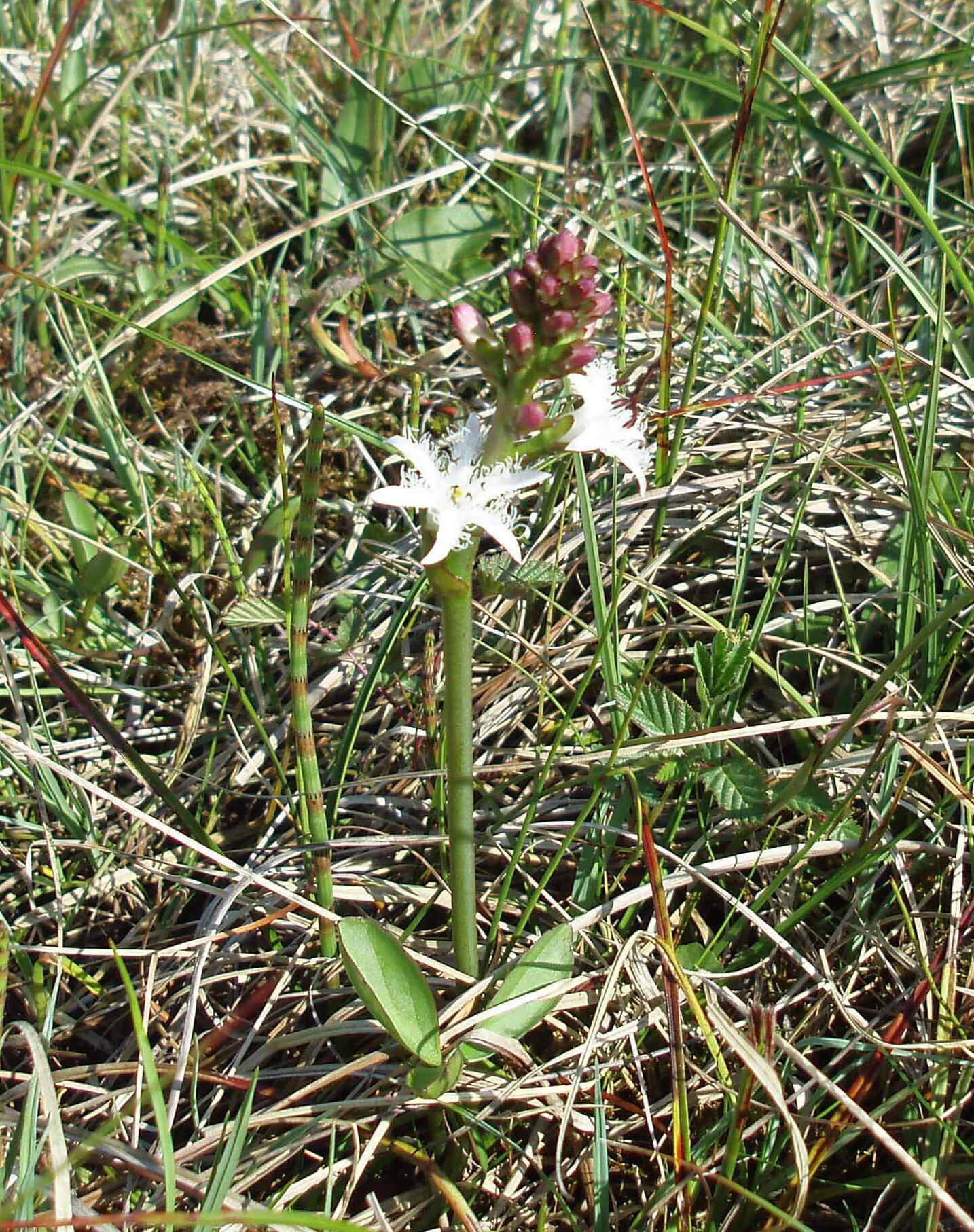
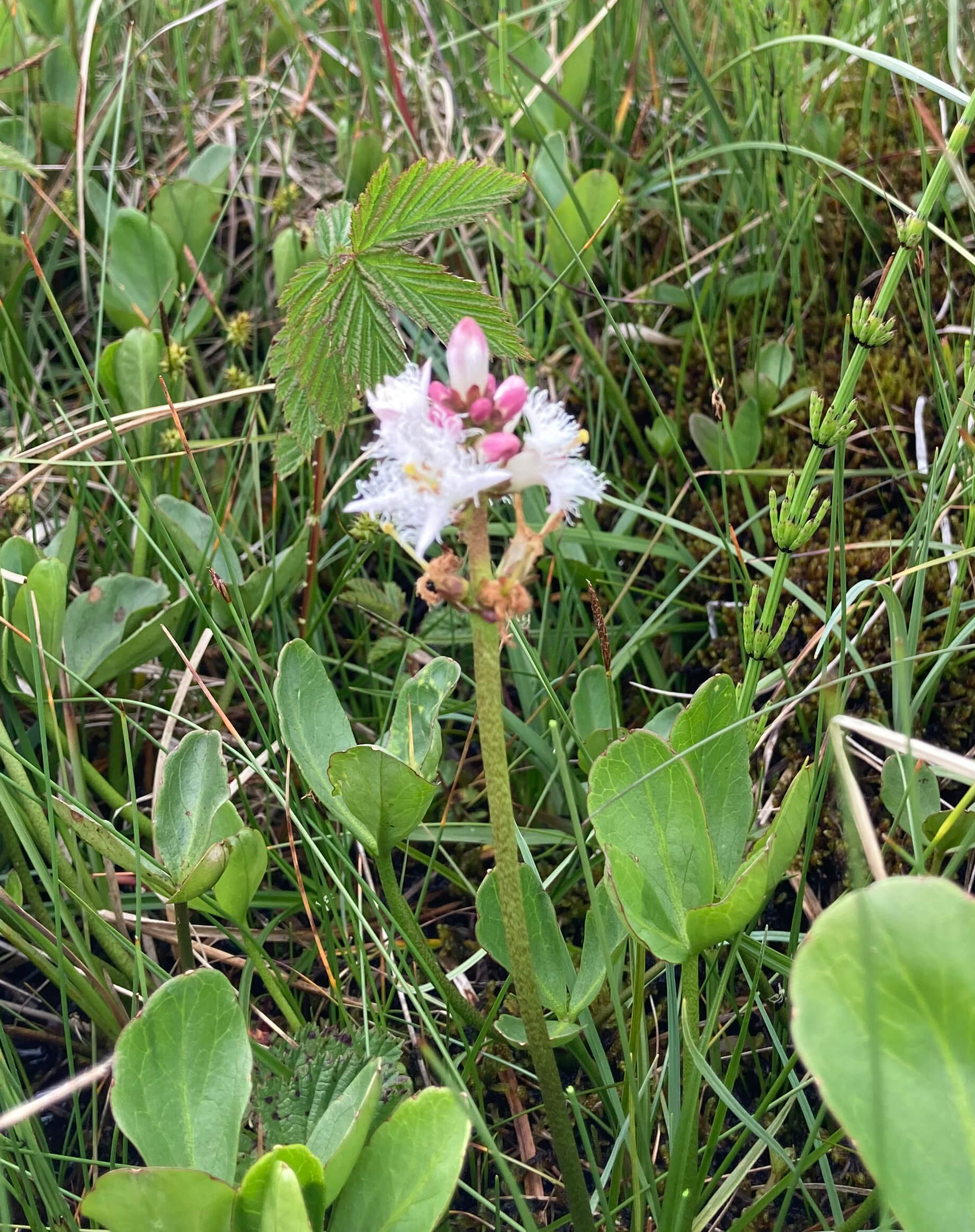
Left: The first bogbean; Right: One of today's bogbeans.
Mission accomplished we now set out for a short triangular walk around the limestone scars of Little Kinmond. The track we took west is on the Coast-to-Coast route and we did see a few walkers – but none with the purposeful air of a coast-to-coaster. Along the track we saw a notice from the Yorkshire Dales National Park Authority saying "Please don't use lane or adjacent fields if you get caught short". I’ve not seen such a notice before. Is the Authority going to put up such notices everywhere? Or does this track particularly provoke caught-short-ness? Are those coast-to-coasters midway between Shap and Kirkby Stephen guilty? Must they hold on for another four hours?
A distant view of the Howgills, with Wild Boar Fell to the left
On the way we enjoyed distant views of the Howgills and to the left of the Mallerstang hills and Wild Boar Fell and, once at the top, of Cross Fell and other Pennine hills – but we had chosen to walk when it was cloudy, to avoid the heat of the June sun, and the view was somewhat gloomy. Around the limestone terraces we found more wild flowers, no doubt of different species to those seen on the boggy moor – but we were a little flowered-out by now. We did, however, see one intriguing flower (shown below right), which from its shape should be a pyramidal orchid. But I read that pyramidal orchids are usually bright pinky-purple and that white versions are rare. Knowing the name of a wild flower doesn't help us appreciate it but knowing its properties, such as its rarity, might.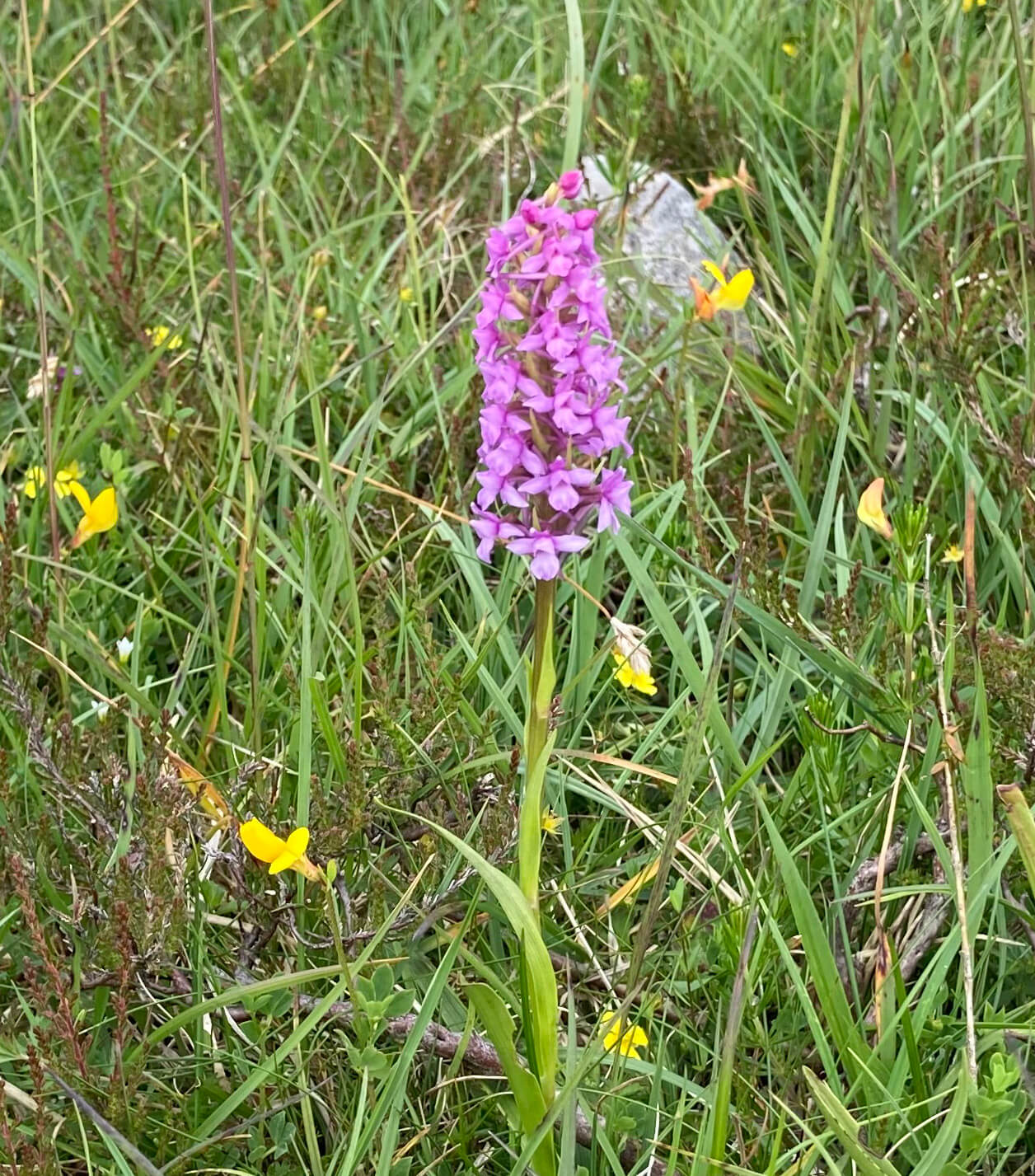
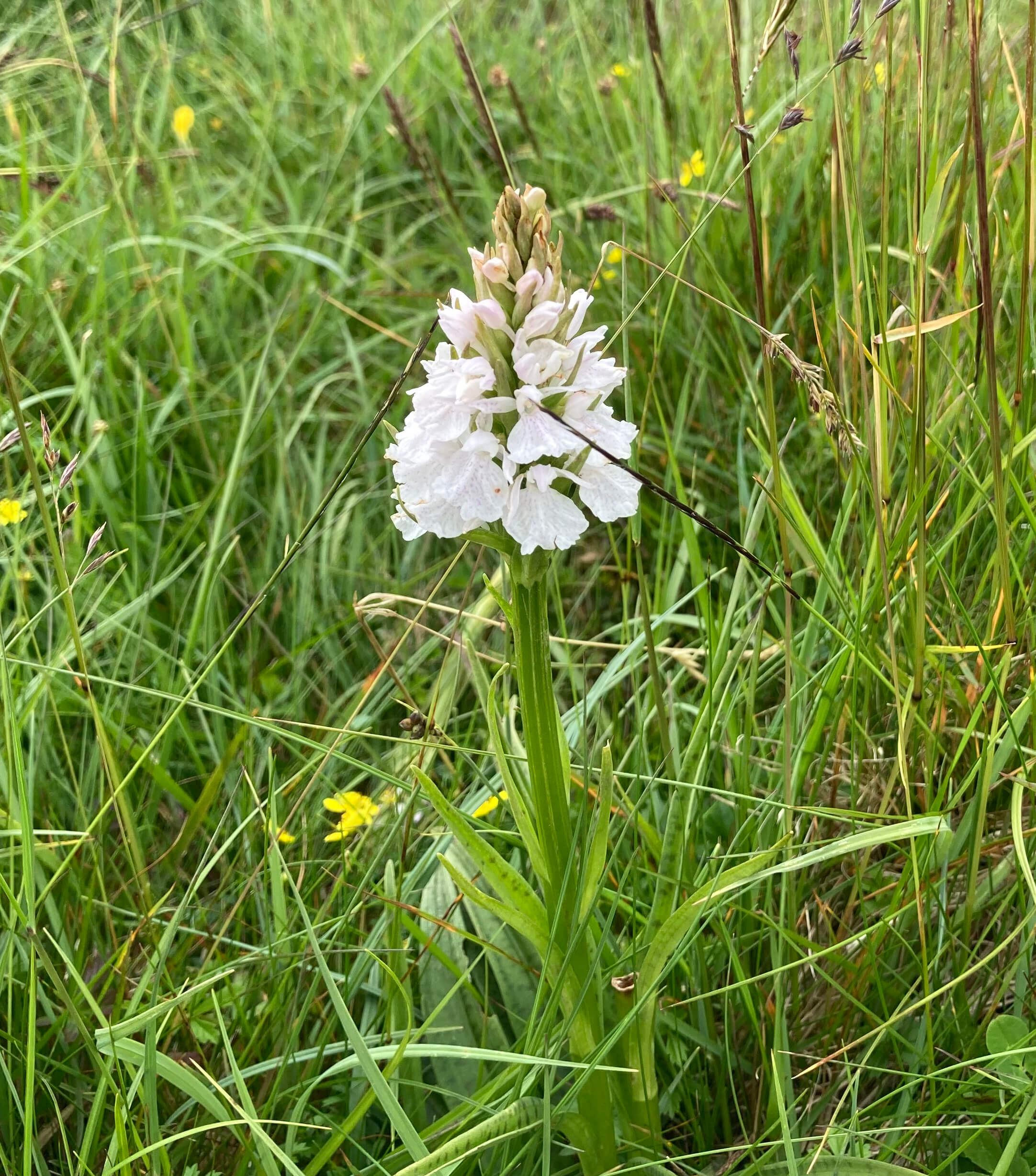
Two orchids on the limestone scars
We headed back down to Sunbiggin Moor – led astray by some bikers who’d taken the wrong path – and were a little surprised not to have a reassuring view of Sunbiggin Tarn ahead until we were almost upon it. By now the promised sun was emerging.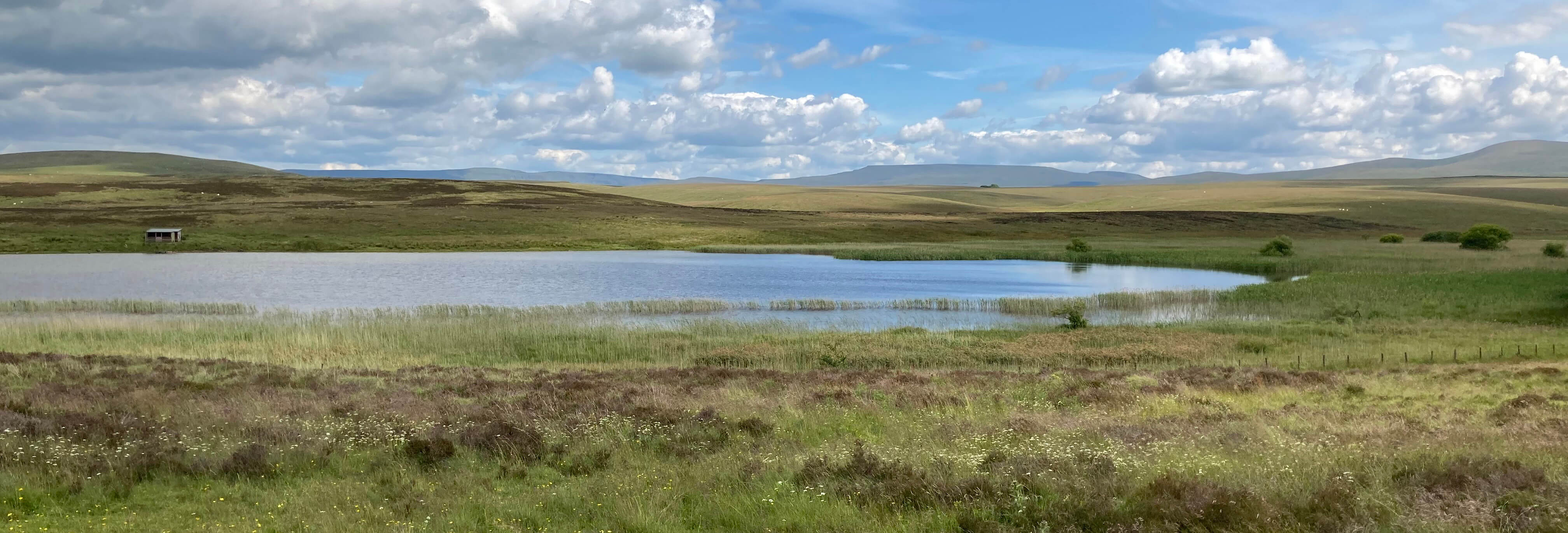
Sunbiggin Tarn
Home Preamble Index Areas Hills Lakes Dales Map References Me Drakkar
© John Self, Drakkar Press, 2018-

Top photo: Rainbow over Kisdon in Swaledale; Bottom photo: Ullswater